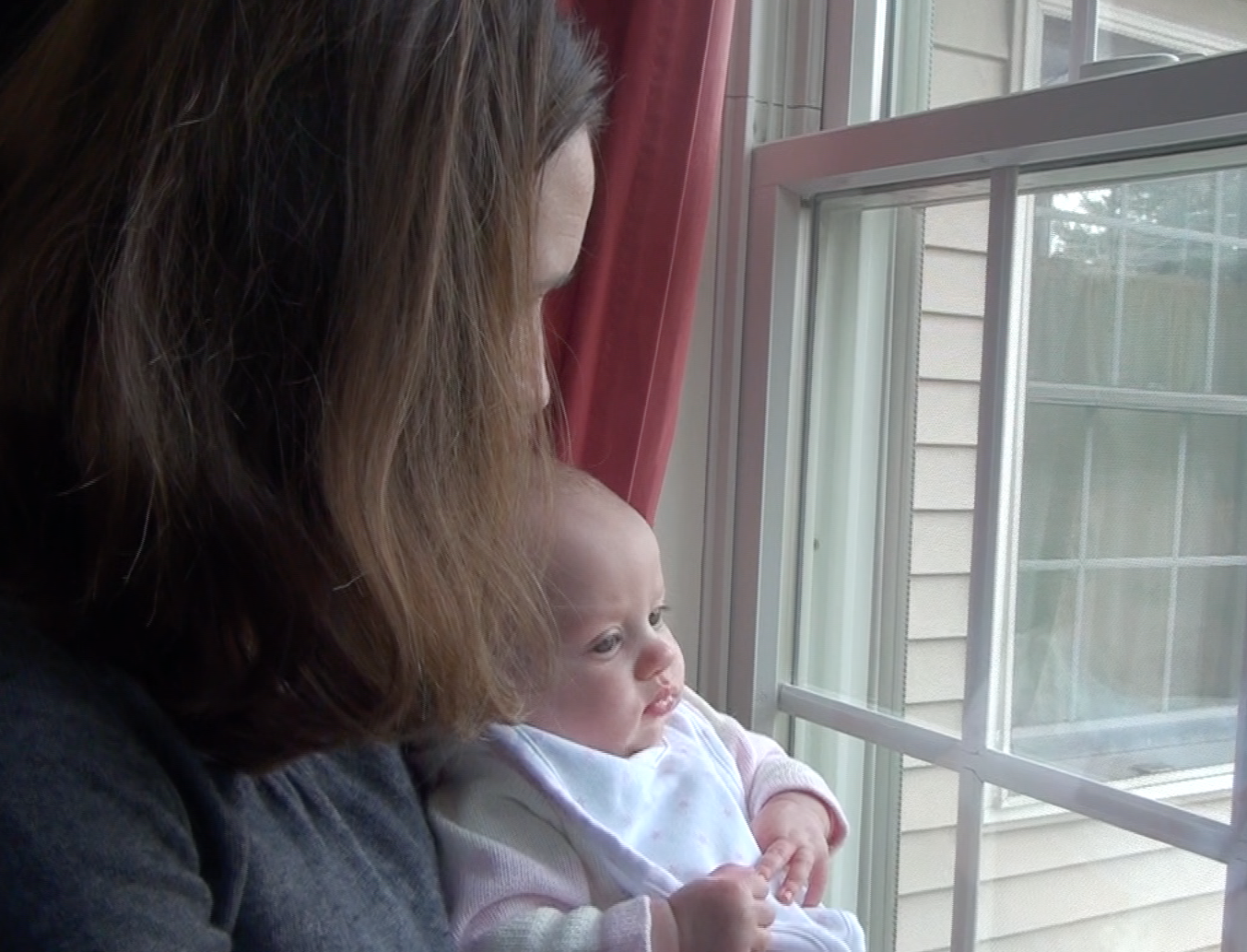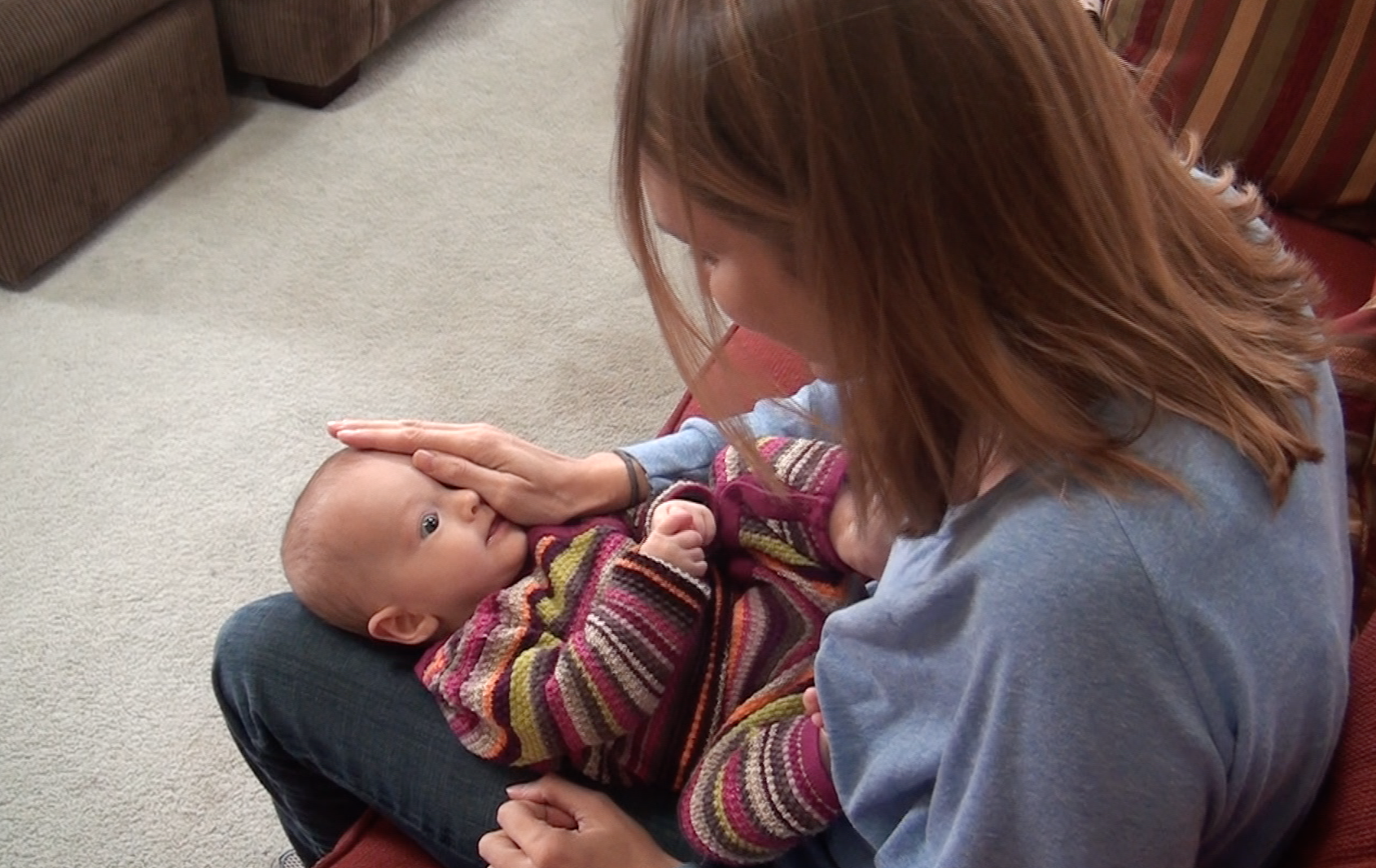
A very important stage of development that occurs right around three months is the development of depth perception. Newborn babies actually have no depth perception at all, but it develops very suddenly right around three months within a two week period. This is really important to be aware of because depth perception requires good and symmetrical vision in both eyes and if a baby has any eye disease or visual delay, depth perception cannot develop appropriately within that crucial two week window.
What sort of eye disease or visual delay can a little baby have, you may wonder.
There are three main concerns for infants:
- amblyopia
- strabismus
- congenital cataracts

Amblyopia is when one eye has decreased visual acuity. Often called “lazy eye,” one eye is slower to reach 20/20 acuity than the other. A good way to assess this is to lie your baby in your lap and make eye contact. Then cover one eye for a few seconds, then cover the other eye for a few seconds. If you baby becomes very agitated when one eye is covered, but not the other one, it could signify decreased vision or amblyopia in one eye and it would be important to seek treatment and get it corrected as soon as possible.
Strabismus is when one eye turns inward or outward consistently. When babies are newborns it is very common for both eyes to be wandering all over the place because the tiny muscles around the eyes are not developed yet, but by six-months their eyes are typically aligned. If you find that one eye continues to turn, it could be strabismus and should be treated.
Congenital cataracts is a clouding of the lens of the eye and it affects visual acuity. This occurs in 1/250 newborns and can lead to amblyopia. You can often notice this in photos of your baby. If you see that you baby always has a white spot in the center of one or both pupils in every photo, it could signify cataracts. Again, you would want to get it addressed as soon as possible so normal visual development could continue to occur.
References:
Kliegman, R., Marcdante, K., Jenson, H. & Behrman, R. (2006). Essentials of Pediatrics, Fifth Edition. Elsevier Saunders.
American Optometric Association. (2018). https://www.aoa.org/patients-and-public/good-vision-throughout-life/childrens-vision/infant-vision-birth-to-24-months-of-age

